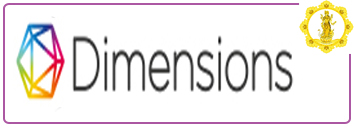KONTROVERSI KONTEN SEJARAH PADA BUKU NON TEKS PENDIDIKAN AGAMA HINDU DAN BUDI PEKERTI SD KELAS 1 SEMESTER 2 KURIKULUM 2013
DOI:
https://doi.org/10.25078/japam.v4i01.3136Keywords:
Ethics, History of Hinduism, Hindu EducationAbstract
The content of the history of Hinduism has recently appeared in textbooks and non-text books on Hindu Religious Education and Morals. The purpose of bringing up the historical content of Hinduism in Hindu Religious Education and Moral Education textbooks and non-text books is for students to know various events in the past based on empirical chronological facts. However, in reality the historical content of Hinduism described in this book is not in accordance with historical studies. Even historical content that is hoax is included in Hindu Religious Education and Moral Education textbooks and non-text books. This is what causes controversy / debate. The purpose of this study is to provide an explanation of historical content that is hoaxes, especially in non-text books on Hindu Religious Education and Characteristics in Elementary School Class I Semester 2. The method used in this research is descriptive qualitative. The type of research used is library research with data collection methods in the form of observation, interviews and documentation. The approach used is a historical approach which includes four stages, namely heuristics, source criticism, interpretation and historiography. The results of this study indicate that the content of the history of Hinduism and the content of the images presented in the non-text book Hindu Religious Education and Characteristics Class I Elementary School Semester 2 are not in accordance with historical facts and sparked controversy in society. This is a mistake by presenting fictitious historical content, especially about the Salakanagara kingdom.
References
Asisi Channel. Salakanagara, (Konon) Kerajaan Tertua di Indonesia & Polemik Naskah Wangsakerta (online), Retrieved December 20, 2022 from youtube.com website: https://www.youtube.com/watch?v=1fvPZjDwnJE
Boechari. (2012). Melacak Sejarah Kuno Indonesia Lewat Prasasti. Jakarta: Kepustakaan Populer Gramedia.
Ekadjati, E. S. (2005). Polemik Naskah Pangeran Wangsakerta. Bandung: PT Dunia Pustaka Jaya
Ismaun. (2005). Pengantar Belajar Sejarah Sebagai Ilmu dan Wahana Pendidikan. Bandung: Historia Utama Press
Groeneveldt, W.P . (2009). Nusantara dalam Catatan Tionghoa. Depok: Komunitas Bambu.
Basri, I., & Hastuti, H. (2020). Bagaimana Sejarah Seharusnya Diajarkan?. Jurnal Kronologi, 2(4), 140-148.
Hastuti, H., Basri, I., & Zafri, Z. (2021). Meramu Materi Pembelajaran Sejarah Berlandaskan Analisis Historical Thinking. Diakronika, 21(1), 57-70.
Herlina, N. (2020). Metode Sejarah. Bandung: Satya Historika.
Lubis, N. H. (2002). Kontroversi tentang naskah Wangsakerta. Humaniora, 14(1), 20-26.
Rulianto, R. (2018). Pendidikan Sejarah Sebagai Penguat Pendidikan Karakter. Jurnal Ilmiah Ilmu Sosial, 4(2), 127-134.
Sjamsuddin, Helius. (2012). Metodologi Sejarah. Yogyakarta: Penerbit Ombak.
Zed, M. (2018). Tentang konsep berfikir sejarah. Lensa Budaya: Jurnal Ilmiah Ilmu-Ilmu Budaya, 13(1).









